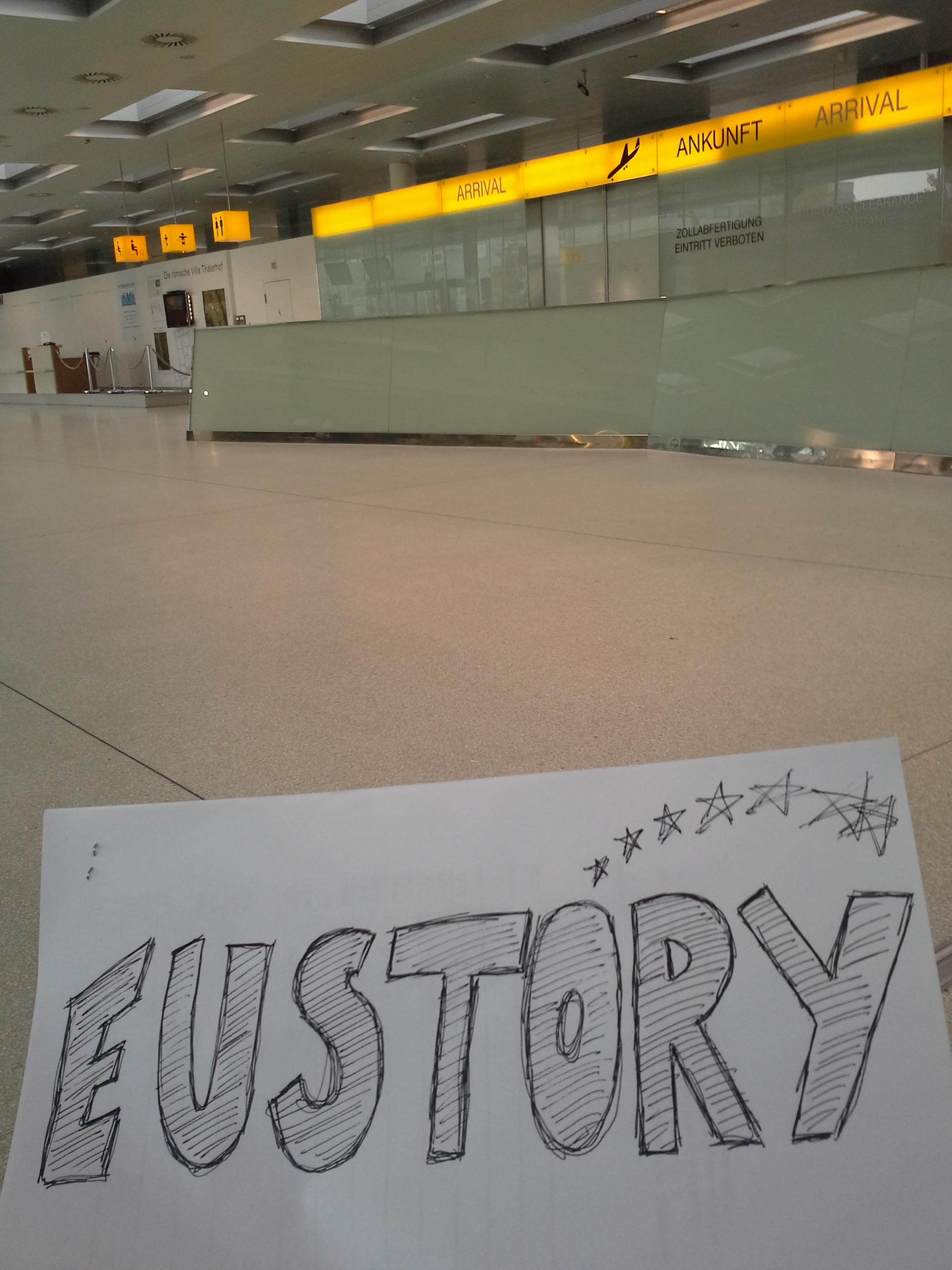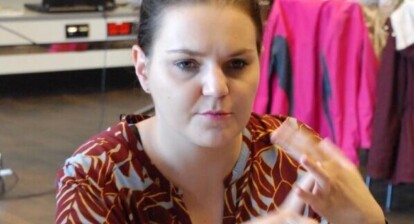 What do 23 young people from 18 European countries have in common? Firstly, the Eustory academy in Ljubljana, Slovenia and secondly, interest in the topic of changing borders and the consequent questions of identities and minorities.
What do 23 young people from 18 European countries have in common? Firstly, the Eustory academy in Ljubljana, Slovenia and secondly, interest in the topic of changing borders and the consequent questions of identities and minorities.
It is the day Zero or the arrival day and all the new, young and enthusiastic Eustorians are gathering in Ljubljana in order to start a yet unknown, but surely unforgettable and interesting Eustory youth academy.
Before the beginning of the academy they all had to do a little bit of homework and preparation, where they had to search for historical maps that show how the borders of their own countries changed in the course of centuries and find out which side and which alliance did their countries choose in different confrontations in history. Since changing borders are inseparably connected with the formation of national minorities, the participants also researched the situation of minorities that live in their countries.
Although the program of the academy did not officially begin yet, we already have an interesting, but not completely unexpected observation: Minorities are a common and well known topic/issue/challenge to all the 18 countries present at the academy. Since minorities are an important question for all the governments, political parties and societies, they also represent a topic that will be seriously and extensively discussed in Ljubljana.
Participants shared very diverse personal experiences with borders, different minority groups and stereotypes that seem to be inherently connected to the latter. Let me finish the Day Zero blog entry in the context of the following day with posting some of the stories connected with borders, which the participants presented:
“The fact is that borders are shared between two (at least) countries, like a bridge. This is their responsibility. Before I thought borders between states were really closed, like the walls of a castle. I just discovered Liberty.” Aurélien, France
“This border is a very special one inside Switzerland that marks the linguistic border between the French and the German part of Switzerland. On one side, you speak French and on the other one (Swiss) German. This border is called “Röstigraben”. Although this border does not exist formally on paper, it is well known in the Swiss population since the French and the (Swiss) German vary not only in the language but also in the way of thinking and when it comes to political situations (eg. in votes). The “Welsch” (French part) are often a bit more easy-going whereas the German speaking part of Switzerland is often seen as a bit stubborn. However, everyone depends on the other and there is no battle for independence between these two parts. Switzerland is such a small country, we could not survive if there was no cultural exchange – we depend on people who have another ethnic background and on other countries.” Michele, Switzerland
“I live just at the Polish-Czech border. It is the border between Poland and the Czech Republic for 70 years now. Before 1945 it was a border between Germany and Czech Republic. Now it is in the same place, it just separates different countries. There are border-stones along the border. These are the same stones that were here for 70 years. On the one site there were a “D” letter, for Deutschland (Germany) and a “C” for Ceska Republika (Czech Republic). After the war the Poles had tried to converse the “D” into a “P” for Poland. Instead of making new stones (which could be a big investment) they just made a small line in the stone, making the “D” a litter longer and creating a clumsy “P”. The stones are there to this day. This is the story of a grandfather of a friend of mine. He was born in 1927 in Sudety Mountain. On 29.09.1939 Germany incorporated large part of Czech Republic. The new border was set 10 meters from his house. His school was from now on in Germany. Then, the Germans entered his village. He lives in one house his entire life, and he was a citizen of four countries. During the time, when the border crossing in my village was closed, my parents organized artistic provocations on the border, to provoke the soldiers and show them, how absurd the closed border is. They invited their Czech friends and they made a fashion show before the eyes of the baffled soldiers. They decorated the barrier, gave the watchmen flowers. I was there, when I was 6, dressed as a deer.” Oldrich, Poland
“After the Liberation, Bulgarian borders were changing constantly. As a result, you might wake Bulgarian one day, but you could meet the down as a citizen of different country. Many families were separated by these circumstances. This was the case with the grandfather of my grandfather. His large family inhabited a territory near the current border of Bulgaria and Macedonia. A treaty decided that a river should be the border. Part of the family of grandpa’s grandfather remained on the other side of the river. They were feeling Bulgarians, but from this day on, they were citizens of Serbia. It was very difficult for the relatives to meet each other. Decades had to pass, before they could get a permission to cross the border. The river separated families, destroyed lives. It was very hard even for me nowadays to go to Macedonia and see my Bulgarian relatives, because the authorities of Macedonia look very bad at people there with Bulgarian consciousness. When we visited our relatives, they were afraid to wave the Bulgarian flag, to perform Bulgarian traditions and even to speak their mother tongue. With the years this story has been narrated by my grandfather’s grandfather, my grandmother, my mother. And now I am narrating it. This is a story of real life.” Martin, Bulgaria
“This summer I spent two weeks in Barcelona (Cataluña) and I found a completely different environment. Talking with native people I heard not radical but convinced opinions of people that thought Spain is stealing their taxes to share them with less developed regions and trying to “make Catalonian people more Spanish”, over the identity they feel they belong to. Actually, Cataluña is the most developed region of Spain, in terms of economy, culture and ideologies. The independence feeling is in the streets and in the majority of population. Catalonian government is organizing a referendum to ask their electors in 2014 if they want to get out of Spain, over the influence of Spanish government and EU institutions. My conclusions from that trip were that borders are just lines drawn in virtual maps and don’t mean anything to people that don’t feel them. Nationalities are not about borders, they are not about decisions in parliaments or economic interests, and of course they are not names. Nationalities are feelings, history in common, they are foods and landscapes more than flags or anthems. That’s why nations go to war and why individual interests use them to create armies of people decided to fight for what they think. They are powerful.” Ramon, Spain




